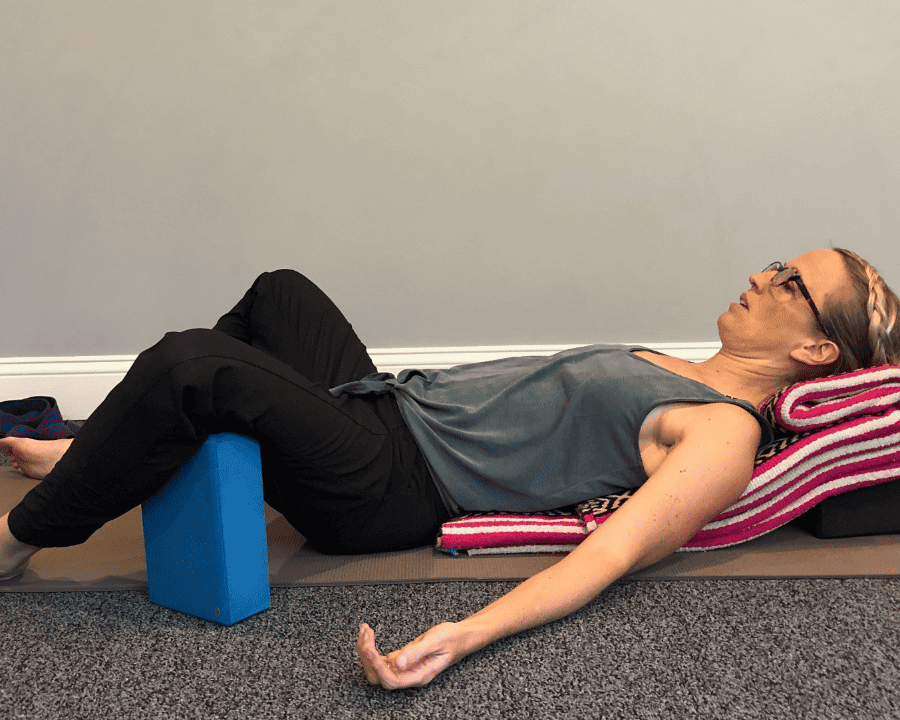The pelvic floor—the set of muscles that support your bladder, bowel, and uterus—plays a vital role in your health, including your sexual experience and pleasure. Strengthening these muscles is not only a matter of health but also of enhancing intimacy and sexual feeling.
But can doing pelvic floor exercises really lead to better sex? Let’s find out.
What Is The “Pelvic Floor”?
Before we explore the connection between pelvic floor exercises and sexual function, it’s important to understand what the pelvic floor is and why it matters.
The pelvic floor covers the bottom of the pelvis, holding organs such as the bladder, the bowels, and, for women, the uterus. Like a trampoline, these muscles can stretch or weaken due to various factors, including pregnancy, childbirth, surgery, aging, and excessive strain from constipation or chronic coughing.
The muscles of the pelvic floor are integral to several bodily functions. They contract to support internal organs and relax, allowing urination and bowel movements. Like any other muscle group, these also require care, attention, and sometimes rehabilitation. Robust pelvic floor muscles are essential for preventing urinary leakage and pelvic organ prolapse.
But beyond these important health issues, scientists also link a toned pelvic floor to improved sexual satisfaction. When these muscles are strong, they can contract more intensely and quickly, which is a component of the reflex we experience as orgasm. They also increase sensation during intercourse, which can make sex more pleasurable.
The Link Between Pelvic Floor Strength and Sex
There is growing interest in the potential for pelvic floor exercises, or Kegels, to enhance sexual function. Who doesn’t want better sex, right?
Here is what the research and anecdotal evidence suggests:
- Increased Sensitivity and Orgasm Intensity: Working on strengthening your pelvic floor can lead to increased sensitivity during sex. Many women also report more intense orgasms after pelvic floor physical therapy and following a regular regimen of pelvic floor strengthening. Both increase blood flow to the pelvic region and heighten response during sexual activity.
- Improved Muscle Control: Stronger pelvic muscles can give you greater control during sex, which may allow for different sensations and potentially enhance pleasure for both partners.
- Reduced Pain During Sex: Some women find that a strong pelvic floor can alleviate discomfort during sex, particularly if the pain relates to weakness or instability in these muscles. A specialist pelvic floor physical therapist can help identify whether weak pelvic floor muscles are causing the pain you experience during penetration and intercourse.
More Blogs From Nancy Branberg
5 Natural Ways To Help With Pelvic Girdle Pain (PGP)
Should I Be Concerned About Pelvic Hernias?
What Could Be Behind My Lower Abdominal Pain?
Pelvic Floor Exercises for a Better Sex Life
Pelvic floor exercises are simple but effective techniques for strengthening the all-important pelvic floor muscles. The best, most effective way to optimize the health and function of your pelvic floor is to consult a pelvic floor physical therapist. Still, you can maintain the results in between sessions with home exercises. Pelvic floor exercises are a non-invasive, empowering method to not only ensure your sexual health and function but also potentially enhance your sexual enjoyment.
Here’s how you can incorporate them into your routine:
Identifying the right muscles: The first step is to make sure you’re targeting the correct muscles (a physical therapist can teach you this part). But the easiest way to find them is to stop urination mid-flow. When you do this, the muscles you feel are your pelvic floor muscles.
Perfecting the Kegel: Once you’ve identified the right muscles, empty your bladder, and lie down. Start by contracting your pelvic floor for 3-5 seconds, then relax for another 3-5 seconds. Do this without holding your breath or tightening your stomach, thigh, or buttock muscles.
Regular practice: Start small and slowly and increase the number of exercises and repetitions over time. Try for three sets of 10 reps of the above exercises per day. You can do them discreetly almost anywhere – sitting at your desk, standing in a queue, or lying down. While there’s strong evidence supporting the positive impact of pelvic floor exercises on sexual function, it’s essential to maintain realistic expectations.
The benefits may take time and require continuous and consistent practice. Like any workout program, results from pelvic floor exercises come with time and consistency.
Listen to your body: If you experience pain or discomfort, reassess your technique or seek professional advice from a pelvic floor physical therapist.
Advanced Exercises: Beyond basic Kegels, there are tools like vaginal weights and biofeedback therapy that can help with pelvic floor training, providing a more challenging workout and better progress tracking.
Pelvic Floor Physical Therapy
Pelvic floor exercises are great; we recommend that all women do them regularly. However, for many women, personal exercise isn’t enough, especially when dealing with significant pelvic floor weakening or dysfunction or problems like urinary leakage or pelvic floor prolapse. Some people also have different experiences with pelvic floor exercises, as genetics, age, and overall health play a role. That’s when physical therapy can bridge the gap.
If you’ve heard the term “pelvic floor physical therapy” in health circles or through a friend’s recommendation, you might have been curious to know what it entails. We often brush pelvic floor-related woes under the rug or dismiss them as an inevitable part of life. But the truth is, they can significantly affect your quality of life. Whether you’re a new mother, an athlete, or someone experiencing discomfort in your pelvic region, pelvic floor physical therapy can be the key to a more vibrant, pain-free life.
Common reasons why you might need pelvic floor physical therapy include:
- Pregnancy and Childbirth: The changes your body goes through during pregnancy, along with the physical stresses of labor and delivery, can weaken the pelvic floor muscles, causing issues such as urinary incontinence, fecal incontinence, or pelvic pain.
- Postpartum Recovery: Post-birth, you may find yourself struggling with pelvic floor dysfunction. This dysfunction could be short-term or long-term issues like incontinence, prolapse, or pelvic pain—even years after having given birth.
- Pelvic Pain Syndromes: These syndromes include conditions like interstitial cystitis, or endometriosis, which involve the pelvic floor and may benefit from physical therapy interventions.
- Pre and Post-Surgical Care: Pre-surgical strengthening and post-surgical reconditioning are critical in many procedures, such as hysterectomies, to make sure the pelvic floor is not left weak or in a dysfunctional state.
- Athletes and Active Women: The demanding physical activities of athletes, especially those that involve repetitive impact, heavy lifting, or extreme physical exertion, can strain or damage the pelvic floor.
- Chronic Constipation: Constipation can lead to the straining of pelvic floor muscles, potentially causing weakness as well as incontinence issues.
A pelvic floor physical therapist can help design a custom exercise plan for you. We guide you through exercises to make sure you’re doing them correctly and monitor how you’re doing. We can also teach you more advanced techniques for even better results. We also use manual therapy – including internal (via the rectum or vagina) and external techniques such as soft tissue mobilization, myofascial release, or trigger point therapy to improve muscle tone and release tight areas.
Sometimes, we may use “biofeedback” where we use monitoring devices to provide visual or auditory feedback about your muscular activity. This technology can enhance your understanding and control of your pelvic floor muscles. We may also use a mild electrical current to stimulate muscle contractions. This approach is useful in re-educating and strengthening weak pelvic floor muscles.

Many different aspects contribute to how much you enjoy sex, which is not limited to the pelvic floor. These exercises are only part of the picture. Emotional intimacy, psychological well-being, and communication in relationships are equally – if not more important factors in a healthy and satisfying sex life. But the pursuit of a fulfilling sex life is a legitimate wellness goal. Sex is an important part of life and relationships, and good pelvic health is crucial for this aspect of life.
So, by seeking help and attention for your pelvic floor, you’re not just investing in your health and sexual wellness but also your health, happiness, and confidence.
Your initial appointment will involve a detailed conversation about your medical history, symptoms, and any relevant lifestyle factors affecting your pelvic floor health. A physical examination is also a crucial part of the process, and you should feel comfortable discussing any concerns or discomfort. It’s essential to seek out a therapist you trust, as the nature of the therapy can be quite personal.



